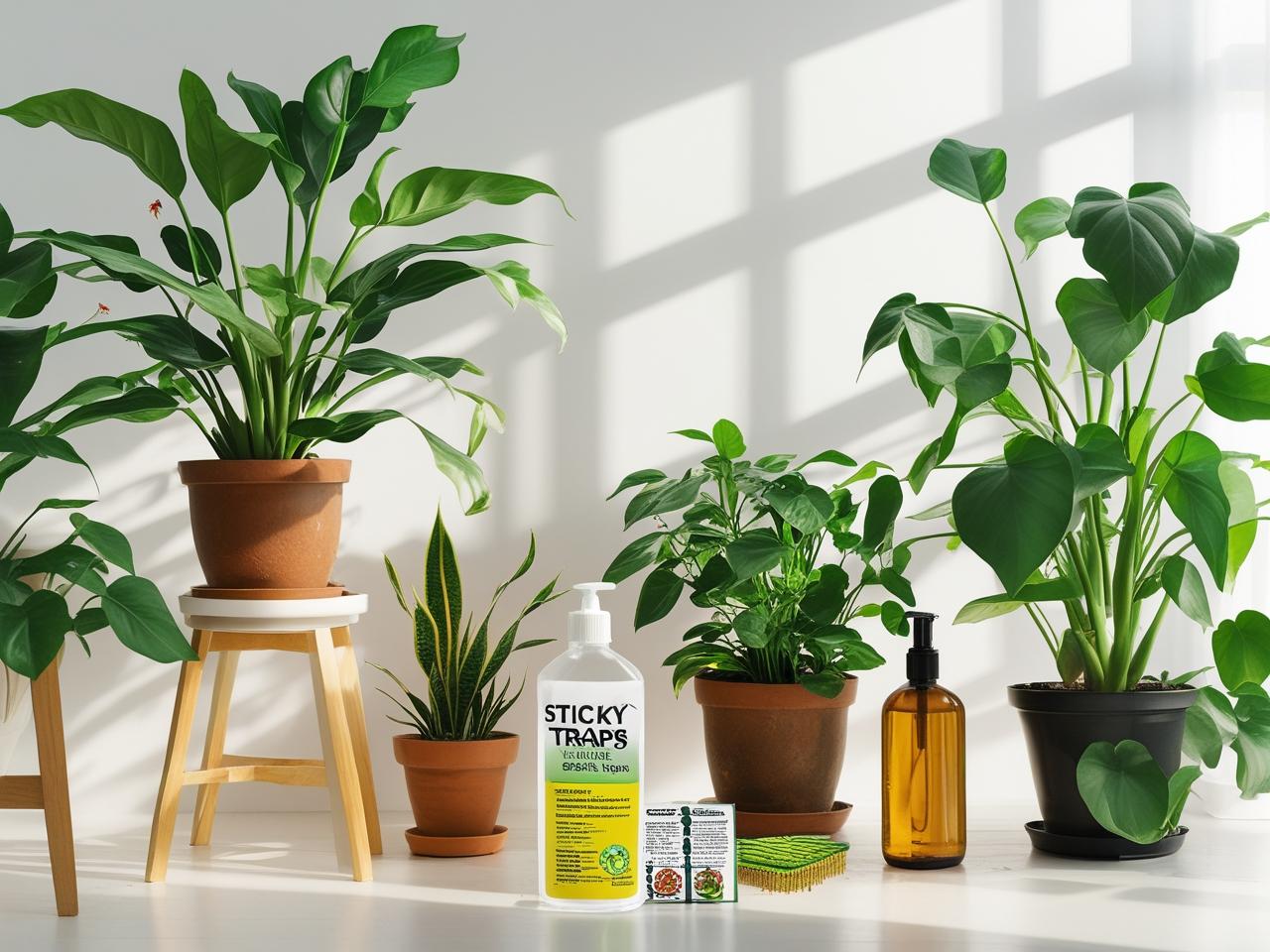Indoor plants brighten homes, purify air, and offer a touch of nature—but they can also attract pests if not properly managed. Common indoor invaders include spider mites, mealybugs, scale insects, aphids, fungus gnats, and thrips. These pests damage leaves, stunt growth, and spread disease. With careful prevention, monitoring, and treatment, you can keep your indoor garden thriving year-round. This guide outlines effective tips for maintaining healthy, pest-free houseplants.
Understand Common Indoor Pests
Learn to recognize typical indoor plant pests:
- Spider mites: Tiny, often reddish, leave fine webbing and speckled yellow-green leaves.
- Mealybugs: Soft, white cottony masses found on stems, leaf joints, or soil.
- Scale insects: Small, round or oval, brown or tan bumps attached to stems or the undersides of leaves.
- Aphids: Tiny pear-shaped insects that cluster on new growth and excrete sticky honeydew.
- Fungus gnats: Small, dark flies hovering over soil, with larvae that feed on roots.
- Thrips: Tiny, slender insects that create silvery patches or black specks on leaves.
Early identification is key to effective control, so train your eye and inspect new plants before bringing them indoors.
Quarantine New Plants
Preventative isolation is one of the best defenses. Keep new plants in a separate area for at least two weeks. Weekly inspections for pests or eggs on leaves and soil surface help avoid introducing hidden infestations to your main collection.
Inspect Plants Regularly
Routine checks are essential. Inspect leaves (front and back), stems, and soil surface weekly. Use a magnifying glass to spot small pests. Early detection allows for targeted treatment before infestations spread.
Maintain Plant Hygiene
Clean plants regularly to reduce pest habitats:
Gently wipe leaves with a damp cloth or soft sponge. For tough dirt or dust, mix mild soap in water (2–3 drops per liter), rinse with clean water, and allow dry.
Remove dead leaves, fallen petals, and debris from soil—these can hide eggs and attract fungus gnats. Repot annually using fresh, pest-free soil to prevent buildup in the top layer.
Improve Airflow and Light
Poor airflow and stagnant, humid air create mites and fungus outbreaks:
Use fans or open windows regularly to increase circulation. Position plants so they receive bright, indirect light—most pests avoid strong light conditions.
Avoid overwatering; moist conditions on leaves encourage pests like fungus gnats and mold.
Use Well-Draining, Sterile Soil
Many pests develop in organic-rich and damp soil. Use sterile potting mixes designed for indoor plants and add sand or perlite to maintain aeration. Avoid outdoor soil or reused mix that may carry eggs or pathogens.
Implement Preventive Sprays
Monthly foliar sprays can deter pests:
Mix neem oil (1 tsp) with mild soap and 1 liter water. Shake and spray foliage, especially the undersides. Let plants dry before returning to their space.
You can also use horticultural oil or insecticidal soap. Always test on a few leaves first to check for sensitivity.
Introduce Beneficial Insects
In enclosed indoor environments, biological control is limited—but for sunrooms, plant shelves, or greenhouses, consider:
- Ladybugs for aphids,
- Predatory mites for spider mites,
- Hypoaspis miles for fungus gnat larvae in soil.
These helpers can maintain predator-prey balance without chemical sprays.
Eliminate Infestations Naturally
If pests appear, treat quickly:
- Mealybugs: Dab adults with alcohol-soaked cotton swabs.
- Scale insects: Gently scrape off with a soft brush and wipe with alcohol-soaked cotton.
- Spider mites: Increase humidity and spray with neem or predatory mite treatments.
- Aphids: Spray insecticidal soap or neem oil. Rinse well with water.
- Fungus gnats: Allow soil to dry completely between waterings and use yellow sticky traps. Consider BTi granules or beneficial nematodes in the soil.
- Thrips: Rinse leaves and flowers; apply neem oil or insecticidal soap on new growth.
Complete eradication may require several rounds of treatment over 10–14 days to break life cycles.
Keep Soil Surface Dry
Fungus gnats thrive in damp soil. Let top soil layer dry before watering. Use coarse sand mulch to discourage adults from laying eggs. Monitor moisture using probes or soil indicators.
Mate Avoid Moisture Build-Up
High humidity favors pests. Use a hygrometer to monitor indoor humidity and keep it around 40–60%. Use dehumidifiers or air conditioners in excessive moisture scenarios.
Identify and resolve causes—leaky pipes, overwatering, or poor ventilation—to prevent recurring outbreaks.
Isolate Severe Infestations
If one plant is heavily infested, isolate it immediately. Place it in an empty bathroom or garage and treat intensively (e.g., daily alcohol swabs, rinses, sprays). Only return it once all pests and eggs are eliminated, usually within two weeks of repeated action.
Rotate Treatments
Avoid pest resistance by alternating control methods. Rotate between neem oil, alcohol swabs, insecticidal soap, and biological options. This prevents pests from adapting and ensures continued effectiveness.
Maintain Healthy Plants
Strong plants resist pests. Provide optimal growing conditions—bright light, good drainage, balanced fertilization, and clean pots.
Trim excessively dense foliage; prune leggy stems and maintain space between plants to allow maximum airflow.
Use Physical Barriers When Possible
Fits like tiny mesh or muslin sachets over high-value blooms like orchids can block pests from eggs. Place sticky traps near leaves to monitor early pest presence.
Document and Adjust
Maintain a pest log: plant type, affected area, pest symptoms, interventions, and duration. Refine care routines based on recurring threats and cyclical patterns, such as seasonal flare-ups when heating activates or humidity changes.
Learn from Experience
Pests can recur. Use past knowledge to adjust plant placement, humidity, and care routines. Rotate soil, flush media, and upgrade treatments based on effectiveness. Share experiences with other indoor gardeners online for fresh perspectives and tips.
Final Thoughts
Pest-free indoor plants require attention, early detection, cleanliness, and a variety of prevention tools. By quarantining new plants, maintaining cleanliness, implementing preventive sprays, and applying targeted treatments, you nurture strong, vibrant foliage year-round. With consistent habits and occasional intervention, your indoor garden becomes a thriving, resilient green sanctuary. If you’d like help identifying pests or choosing treatment products, feel free to ask—I’m here to help!

